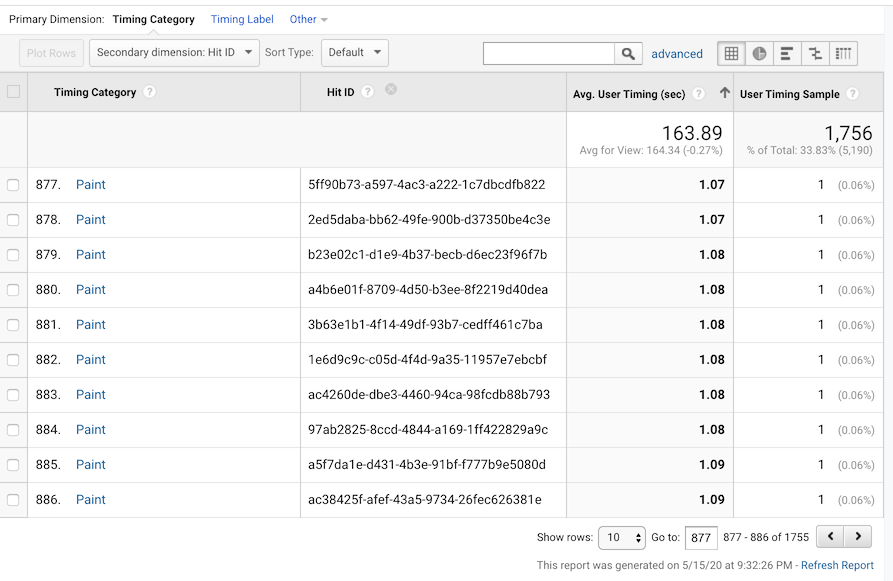Understanding Secondary Dimension in Google Analytics: A Total Guide
Understanding Secondary Dimension in Google Analytics: A Total Guide
Blog Article
Unlock Deeper Insights With Secondary Dimension in Google Analytics
With the vast area of data readily available in Google Analytics, the usage of second measurements can substantially enhance your analytical capacities. These added layers of data use a nuanced perspective that can illuminate detailed information within your main metrics. By strategically incorporating second measurements right into your evaluation, you can uncover valuable understandings that might otherwise remain obscure. The capacity to divide and analyze customer behavior with better accuracy opens up a world of opportunities for improving and maximizing strategies performance.
Understanding Key Vs. Secondary Measurements
On the other hand, secondary dimensions permit you to further dissect your key dimension data. By including an additional dimension, you can layer on added information to your main measurement, allowing an extra granular analysis. If your key measurement is the source/medium via which customers got here on your website, including an additional dimension like geographical place can expose where those customers are situated geographically.
Making Use Of Second Dimensions Effectively
Successfully making use of second dimensions in Google Analytics enhances the deepness and granularity of data evaluation, supplying valuable insights into customer behavior and trends. By integrating secondary measurements along with key dimensions, marketers and experts can delve much deeper right into the specifics of individual interactions on their web sites. Second measurements allow users to segment and filter primary dimension data further, offering a much more comprehensive sight of customer demographics, interactions, and actions. This can be especially beneficial when attempting to recognize the effect of specific variables on user engagement, such as the devices or internet browsers they are utilizing, the sources of their web traffic, or their geographic places.
Additionally, secondary measurements enable customers to compare and contrast different information points within a solitary record, promoting a much more thorough analysis of individual habits patterns. By leveraging secondary dimensions effectively, companies can reveal concealed insights, enhance their advertising approaches, and boost the total user experience on their web sites.
Checking Out Usual Additional Dimension Combinations
To further assess customer habits and patterns in Google Analytics, it is beneficial to explore common combinations of second measurements. By integrating different secondary dimensions, experts and online marketers can acquire deeper understandings right into exactly how different variables influence and engage site performance. Some typical additional measurement combinations that offer important understandings include examining web traffic resources with individual places to comprehend where web site visitors are coming from geographically and exactly how they discovered the website. In a similar way, combining touchdown pages with devices can disclose which pages do best on various devices, assisting in optimizing the website for better customer experience. Checking out customer actions metrics with additional dimensions such as demographics or rate of interests can assist in targeting details audience sections more efficiently. By checking out these usual secondary measurement mixes, services can uncover hidden patterns, determine possibilities for renovation, and make data-driven choices to boost their online presence.
Using Secondary Measurement in Custom News
Utilizing secondary dimensions in customized reports permits for a much more comprehensive evaluation of data in Google Analytics, enhancing the depth of understandings acquired. When producing personalized records in Google Analytics, incorporating secondary dimensions can supply an extra in-depth sight of exactly how numerous measurements connect with each various other. This attribute enables customers to delve deeper right into their data and discover valuable relationships that might not be promptly obvious.
By using secondary dimensions in personalized records, customers can acquire a much better understanding of their web site or application traffic. For example, integrating the main dimension of "source/medium" with the secondary measurement of "touchdown web page" can expose which landing web pages are carrying out ideal for website traffic coming from particular More hints resources. This understanding can help marketers enhance their campaigns and boost overall conversion prices.

Enhancing Information Visualization With Secondary Measurement
When checking out data in Google Analytics custom records, integrating additional measurements not only offers a much more detailed analysis however additionally enhances the graph of insights via data visualization. By including a second measurement to your records, you can improve the means data is presented, making it much easier to identify patterns, trends, and correlations within your site's performance metrics.
Secondary measurements can aid you segment your information even more, enabling a deeper understanding of customer habits and communications on your website. This enhanced degree of granularity can be particularly useful when trying to separate specific variables that might affect your web site's performance - Secondary Dimension in Google Analytics.

Verdict
In verdict, leveraging second measurements in Google Analytics enables for a more thorough analysis of information, leading to much deeper insights and more informed decision-making. Secondary Dimension in Google Analytics. By adding additional layers of information to main information sets, marketers and analysts can uncover covert patterns, patterns, and relationships that give a granular view of user actions and communications. This improved degree of understanding allows optimization of projects and tailored techniques for details target market sections, inevitably improving efficiency and conversion prices
On the other hand, second dimensions enable you to further study your main dimension data. By including an additional dimension, you can layer on additional info to your key measurement, enabling a much more granular evaluation. If your primary measurement is the source/medium through which customers showed up on your website, including a second measurement like geographical area can disclose where those users are located geographically. By integrating second dimensions alongside primary measurements, marketers and experts can dig deeper right into the specifics of individual interactions on their internet sites. Additional dimensions enable i loved this users to sector and filter key measurement data further, using a much more in-depth view of customer interactions, actions, and demographics.
Report this page